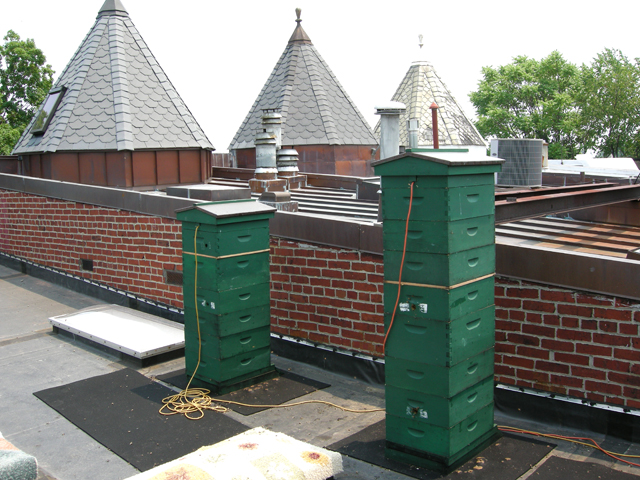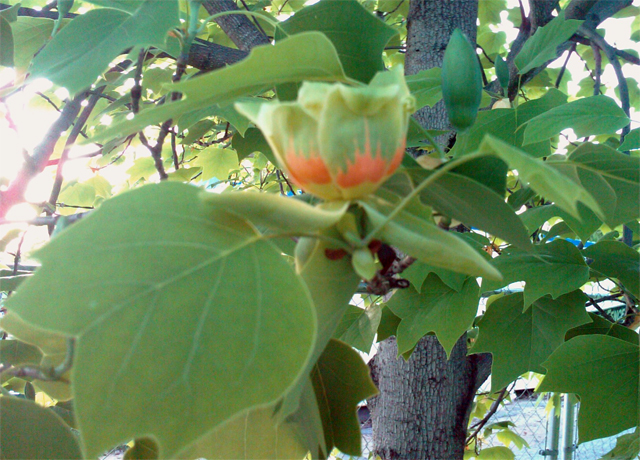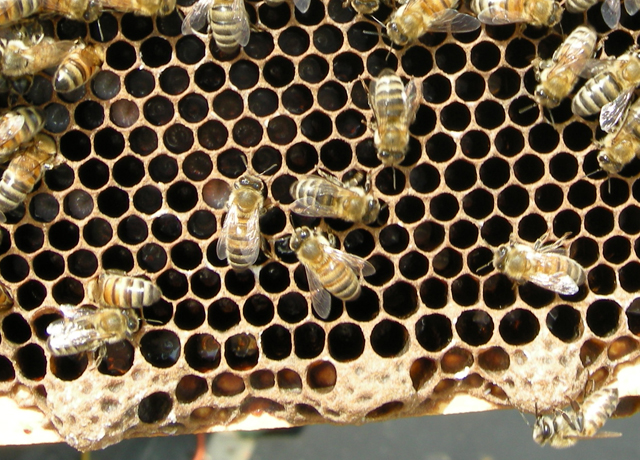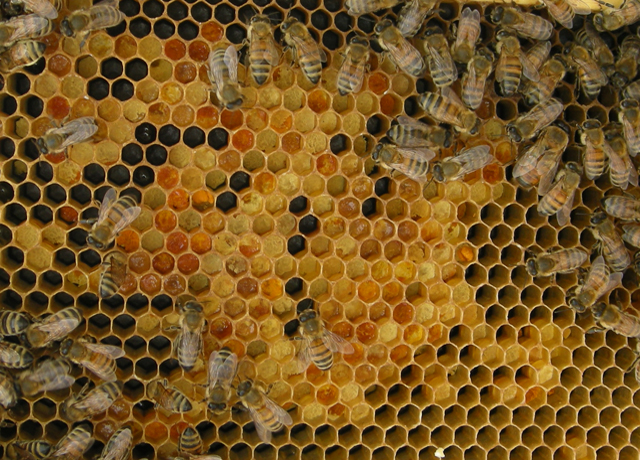 Hey there, remember me? Truth is, I almost wish you didn't (*if* you do remember, that is). I've spent the past 6 months just wondering what to say about the bees and my beekeeping and this whole great adventure. Just like a letter you keep meaning to write, knowing what to tell you has grown more difficult with each passing day. I started this post on March 5, 2008, more than three months ago. And I still can't decide what was going on then (or now).
Hey there, remember me? Truth is, I almost wish you didn't (*if* you do remember, that is). I've spent the past 6 months just wondering what to say about the bees and my beekeeping and this whole great adventure. Just like a letter you keep meaning to write, knowing what to tell you has grown more difficult with each passing day. I started this post on March 5, 2008, more than three months ago. And I still can't decide what was going on then (or now).But what anyone would probably want to know first is, "How are the bees?" The simple answer is that I still manage six live hives, and everyone that went into the winter came out again: no small victory! The harder-to-explain answer is that I have never been less sure of myself as a beekeeper. The picture above shows Wilde, the roof hive that worried the most during my first year. Right now, that hive is on track to deliver perhaps 200 lbs of honey when we harvest in 2 to 3 weeks. That equals last year's entire harvest. You can see a light colored line across the middle of the hive. That's a queen excluder, my first year using them. Below the excluder is the brood nest of over 60,000 bees, but a really narrow chimney of a brood nest. There is almost as much honey below as above!
 I can tell you one story after another about this year, each one ending with "In about a week when I check back in I hope to be able to give you an answer." This picture was taken on April 24, the date of the first tulip poplar bloom in my neighborhood, and the official beginning of the one great flow of nectar goodness that the bees enjoy each year. It also marks the last time I saw eggs in any of my in-town hives. Let me show you what I mean...
I can tell you one story after another about this year, each one ending with "In about a week when I check back in I hope to be able to give you an answer." This picture was taken on April 24, the date of the first tulip poplar bloom in my neighborhood, and the official beginning of the one great flow of nectar goodness that the bees enjoy each year. It also marks the last time I saw eggs in any of my in-town hives. Let me show you what I mean... I'm wearing even stronger glasses this year, so at first I thought my eyes were failing me, and I used my camera to take close ups of the frames — back at my desk I can look at them at high resolution and often see things that get by me in real life. The camera only saw what I did, though: over and over again, I found only 3+ day old brood in the city colonies. All four colonies.
I'm wearing even stronger glasses this year, so at first I thought my eyes were failing me, and I used my camera to take close ups of the frames — back at my desk I can look at them at high resolution and often see things that get by me in real life. The camera only saw what I did, though: over and over again, I found only 3+ day old brood in the city colonies. All four colonies. I need to see eggs to see if the queens are doing well, and to figure out whether the bees need space, and where they need it (Brood nest? Honey super?). It makes no sense to come back time after time and see older brood, but never the new stuff.
Warning: Geeky Beekeeper Speculation Ensues
 MaryEllen hazarded an explanation based on our weird Winter and the pattern of Spring weather: the bees came through strong and populous because the cold weather was not that cold, and they ate alot of the stored pollen. She knows that I have never supplemented pollen (yes, kids, you can actually buy pollen supplements), because we are basically awash in it, and for the first time I had actually culled pollen bound frames in the autumn. This picture shows brand-spanking new pollen recently stored when I opened the hive. In other words, the only pollen I found was so new that it appears true that the bees had run through everything they had until very recently.
MaryEllen hazarded an explanation based on our weird Winter and the pattern of Spring weather: the bees came through strong and populous because the cold weather was not that cold, and they ate alot of the stored pollen. She knows that I have never supplemented pollen (yes, kids, you can actually buy pollen supplements), because we are basically awash in it, and for the first time I had actually culled pollen bound frames in the autumn. This picture shows brand-spanking new pollen recently stored when I opened the hive. In other words, the only pollen I found was so new that it appears true that the bees had run through everything they had until very recently.We had a very rainy pattern this Spring. Days of rain and cold, followed by a brief sunny opening when a person could visit a hive. MaryEllen pointed out that, in times of pollen dearth, the bees can cannibalize eggs in order to focus what they have on older larvae. They have more invested in the older brood, and perhaps my pattern of inspecting the hives so closely reflected the intervals when weather kept the forager bees inside that I never had the hive open on a day when the queen had the opportunity to lay some new eggs that had a chance to be fed.
I was not really buying this: I was sure I'd messed something up. But I have now seen no eggs in two months, yet I continue to see capped brood and new bees, so there's no other explanation I can figure. Other beekeepers who have no reason to pity me have found this theory plausible!
Swarms: The Big Story of 2008
Even if "The Mystery of the Missing Eggs" had not cost me some sleep, my yearly inability to prevent swarms would. But then again, it happened to everyone this year. Everyone's bees came through the Winter strong, got to feeling crowded when trapped inside, hit an all-at-once flow of all the early, mid, and late-season nectar sources, and decided to swarm.
The beekeepers of this region have, as a group, made the best effort in decades to re-establish the feral honeybee population, as involuntary as it was.
But I had sworn this year to be a better beekeeper: to keep better records, to do all the reversals and frame rearrangements and overall space management necessary to keep the girls home and safe, and I failed. I did my first reversals — re-ordering the boxes so that there was always a bunch of extra brood space above the queen's location — in March, my first checkerboardings (inserting empty comb into crowded brood areas) in April. It basically did not matter.
Three of my six hives swarmed, mostly after the nectar flow, though. The big hive pictured above was stopped only when I inadvertently made a split with the old queen in it. This was unfortunate because I was intending to make a new colony to house a locally bred queen I had just purchased from a beekeeper I really like. (Sorry, Leigh: I could not bring myself to tell you any other way). I had reached into that monster hive to grab just 5 varied frames from the over 60 that were in there, and somehow I missed the fact that I had grabbed the queen on one of them. The workers in the new nuc killed my new local queen in the introduction cage. I am such an oaf, so irresponsible, in such a rush. It was just terrible to see how I had sentenced her to die in fear. And she was such a carefully produced monarch from a thoughtful fellow beekeeper!
It appears, however, that by taking the old queen, I stopped the Wilde colony from swarming like practically everybody else did, so there will be a harvest this year. Wouldn't it be nice if some forethought and care had something to do with it?
This is enough updating for now. I will try to tell you more about the monastery, mill, and mentee colonies that have also needed some care this year. This post might not measure up any more than I feel my beekeeping does, but I hope that those of you who were worried aren't anymore, and those of you who are rooting for the bees are only working harder at it in the light of my mistakes!
5 comments:
Well come back. I miss your posts.You belong to beekeeping so I'm looking for your posts.
Romanian Drone
Toni,
Thanks for your update and for braving the traffic and sharing your insights with us in Cumberland this past friday. Enjoy the basswood flow!
cooper5@hereintown.net
The reason I'm writing is because I am a big fan of farmers' blogs, and I got frustrated at spending too much time trying to find good ones and then forgetting to bookmark them.
So, I've started www.farmblogs.blogspot.com.
The idea is simple. I ask farm bloggers I like to recommend bloggers they like; I then write to those that they have recommended, as I am writing to you, and ask you to send me a brief description of your blog, and the farm blogs that you recommend.
You were recommended by Steve at Church Farm View.
I've put a link to you on www.farmblogs.blogspot.com
All I ask is that you send me a brief email to info AT ianwalthew.com with a few words about your farm, your blog AND your own favorite farmers' blogs.
I then make a brief posting, add your recommendations, contact the blogs you recommend, and so it goes.
BTW, where I live in the mountains is big bee keeping country - honey makers, honey biscuists, honey bread, honey you name it. Look in from time to time at www.aplaceintheauvergne.blogspot.com, especially Thursdays (market day) for some bee producers and their food.
Looking forward to hearing from you.
Kind regards,
Ian
www.aplaceintheauvergne.blogspot.com
www.ianwalthew.com
Hi Toni,
could you please give me details about the "tulip poplar" tree in your second picture (latin name preferred, if you can get it). Today we saw an unknown tree in the woods near our home with leaves like the one in your picture (similar to sugar maple, but with a cleft instead of the mittle tip). It's absolutely alien to these lands and I'd like to be able to tell what it is.
By the way, I'm happy to see you are continuing your blog. I was getting worried something was seriously wrong.
Ulrike & family
Hi all -- thanks for the kind words.
I'm sort of honored to be included in the ranks of True Farmers!
And about the Tulip Poplar...here's some info I got from the Wikipedia:
"Liriodendron is a genus of two species of tree in the Magnoliaceae family, known under the common name Tulip tree. Liriodendron tulipifera is native to eastern North America, while Liriodendron chinense is native to China and Vietnam."
The picture for Liriodendron tulipfera is certainly our local variety, but it says this about the Asian variant:
"Liriodendron chinense has more deeply lobed foliage and no orange pigment in its flower."
I'm no tree expert, but it seems kind of unlikely that our Tulip Poplar appear in a European forest. They are among the tallest trees in North America, and they prefer relatively most growing areas (we say that they like to have "wet feet").
However, this is what they say about Liriodendron chinense, the Chinese tulip tree:
"For many years, it was thought to be a small tree because its first known populations were coppiced and because its earliest introductions outside Asia were in parts of Europe where growing seasons are much cooler than in its natural habitat."
But the pictures I found online don't sound like your description!
Post a Comment